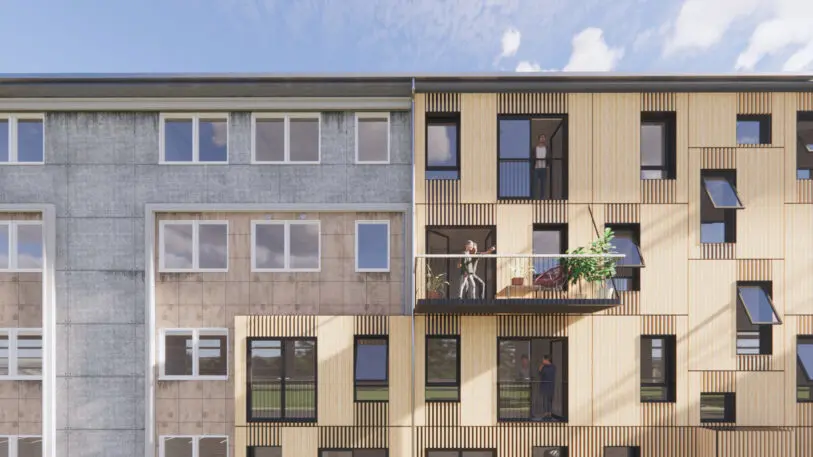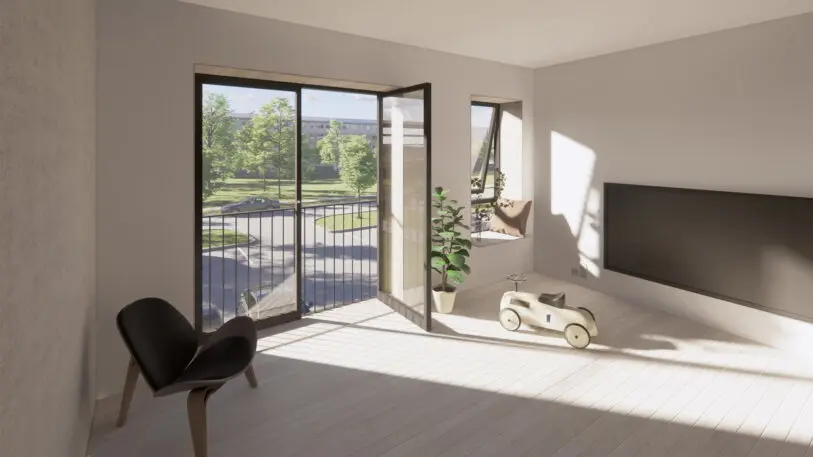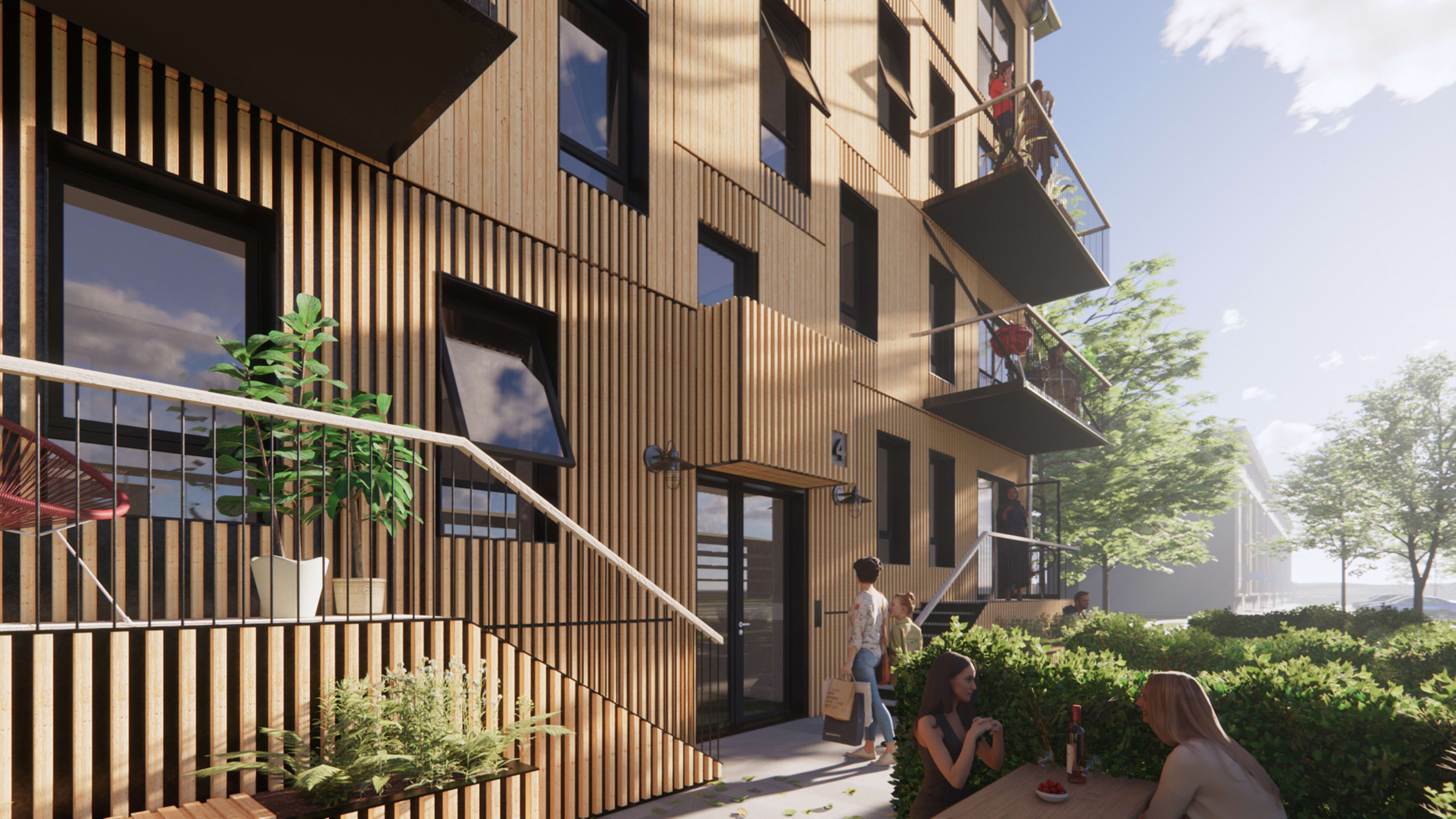Buildings have a giant carbon footprint: Generating the power needed to run lights, heat, and air conditioning is responsible for more global emissions than the entire transportation sector. New buildings perform better, but most of the buildings that will exist in 2050—when humanity’s carbon footprint needs to shrink to zero—already exist now. That means that each of those buildings will have to be renovated to become more efficient.
In Denmark, a team will soon begin testing a new solution—a prefab, modular facade that can quickly be installed on top of an existing facade to instantly help the building save energy. “The world is burning, and all of us in our respective fields need to do something,” says Martin Vraa Nielsen, who is co-leading the project at the architecture firm Henning Larsen, which is collaborating on the project with eight other organizations. “If you look at the building industry as a whole, it’s very clear that we, in particular, need to make a change . . . If we want to make a difference as an industry, it means starting with what already exists, fixing what we already have. We need to be doubling that amount of transformation work we do.”

[Image: courtesy Henning Larsen]The designers say that the new system of panels is a little like the Ikea kitchen of facades, easy to use and scale up. Depending on the layout, an entire housing block could be renovated in a week. The panels are designed to help cut energy use in half after a simple installation; brackets are embedded in the old walls to support the new panels. “The panels work by clipping onto the existing structure, so you’re actually not pulling the old walls down, you’re just adding this new outer layer,” he says. “It adds another layer of insulation to the often not-so-well-insulated structures, thus helping reduce heat loss.” Perhaps most importantly, the panels can be installed while residents stay in place, unlike a typical renovation.

Although the system was specifically designed for social housing—buildings that are common throughout Europe—it can be adapted for other types of buildings. Though the first installation has faced delays because of the pandemic, it’s likely to happen later this year at a housing development on the outskirts of Copenhagen.
“The first hurdle is to have it completed on a large scale,” Nielsen says. “Only once we’ve done this quite a few times will we really have the product, and more importantly, the process, optimized and fine-tuned. Once we have that done, it will also give us the opportunity to make improvements. Like all of design, it’s an iterative process. This learning process is the most important one, really. It will allow us to improve on our ideas and help others to avoid pitfalls in the process when they take it on. Taking on the carbon footprint of construction isn’t a job for one person, one office, one team—we all need to be part of it.”
Recognize your brand’s excellence by applying to this year’s Brands That Matter Awards before the early-rate deadline, May 3.
